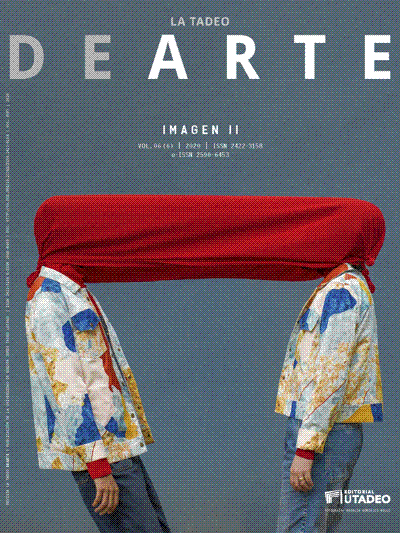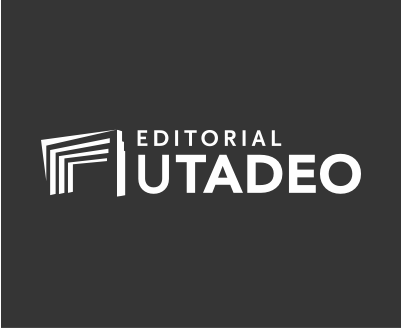Esta obra está bajo una licencia internacional Creative Commons Atribución-NoComercial-CompartirIgual 4.0.
Resumen
Tradicionalmente, la imagen ha sido considerada útil en la enseñanza de lenguas. Hoy, educadores alrededor del mundo superan barreras culturales gracias a Google, YouTube, iPhones, cómics y muchas otras plataformas, a través de las cuales las fotografías, las ilustraciones y los videos contribuyen a darle significado a las palabras. Este artículo expone reflexiones originadas en mi estudio doctoral sobre la conceptualización de la alfabetización visual en la enseñanza del inglés para adultos. Se investiga qué entienden los profesores participantes como alfabetismo visual, el papel que le atribuyen a la imagen en sus pedagogías y los diferentes usos que le dan, basados en sus principios y experiencias. Los resultados indican que el uso de la imagen como soporte al texto escrito limita su validez como medio de comunicación en sí, relegándola a una posición secundaria. Al parecer, en esta área de la educación se enseña «con imágenes» y no «sobre imágenes».
Citas
Atkins, S-J. 2006. "Constructing visual literacy: An investigation into upper primary teachers' construction of visual literacy teaching." University of Wollongong.
Australian Education International. 2011. "National Standards for ELICOS (English Language Intensive Courses for Overseas Students) Providers and Courses." accessed 11 June 2018. https://internationaleducation.gov.au/Regulatory-Information/Education-Services-for-Overseas-Students-ESOS-Legislative-Framework/foundationstandards/Documents/National%20%20ELICOS%20Standards.pdf.
Avgerinou, M. D. . 2001. "Towards a visual literacy index." In Exploring the visual future: Art design, science & technology, edited by R. E. Griffin, V. S. Villiams and L. Jung, 17-26. Loretto, PA: IVLA.
Avgerinou, Maria D. 2007. "Towards a Visual Literacy Index." Journal of Visual Literacy 27 (1):29-46.
Barton, Georgina. 2016. "Unpacking visual literacy for early years learners." Practically Primary 21 (1):6.
Beauchamp, Catherine, and Lynn Thomas. 2009. "Understanding teacher identity: an overview of issues in the literature and implications for teacher education." Cambridge Journal of Education 39 (2):175-189. doi: 10.1080/03057640902902252.
Beijaard, Douwe, Nico Verloop, and Jan D. Vermunt. 2000. "Teachers’ perceptions of professional identity: an exploratory study from a personal knowledge perspective." Teaching and Teacher Education 16 (7):749-764. doi: http://dx.doi.org/10.1016/S0742-051X(00)00023-8.
Bennett, Tamryn. 2011. "The kaleidoscope of visual poetry: new approaches to visual literacy." English in Australia 46 (3):55-67.
Boche, B., and M. Henning. 2015. " Multimodal Scaffolding in the Secondary English Classroom Curriculum." Journal of Adolescent & Adult Literacy 58 (7):579-590.
Borg, S. 2013. Teaching Research in Language Teaching: A ctitical analysis. Cambridge: Cambridge University Press.
Borg, S. . 2006. Teacher Cognition and Language Education: Research and Practice. London: Continuum.
Braun, V. , and V. Clarke. 2006. "Using thematic analysis in psychology." Qualitative Research in Psychology 3:77-101.
Bundensen, C. 2011. "English language teaching and testing: Leading the way?" In Making a difference: Australian international education, edited by D. Davis and B. MacKintosh. Sydney: University of New South Wales Press Ltd.
Burns, A. 2014. "'Systematic inquiry made public’: Teacher reports from a national action research program." Research Notes 56:4-6.
Callow, Jon. 2007. Show me: developing a broader view of visual literacy in education. Werrington NSW: University of Western Sydney.
Cambridge Assessment English. 2017. "CELTA (Certificate in Teaching English to Speakers of Other Languages)." accessed 18 Ocotber 2017. http://www.cambridgeenglish.org/teaching-english/teaching-qualifications/celta/.
Carey, M., and A. Robertson. 2015. "ELT practice in Australia across three sectors: State education, migrant education, and ELICOS." In English Language Education in a Global World: Practices, Issues and Challenges, 147-160. Queensland, Australia: Nova Science Publishers, Inc.
Corder, S. Pit. 1966. The visual element in language teaching. London: London : Longmans.
de Silva Joyce, H. . 2014. Multimodal and visual literacy in the adult language and literacy classroom. Darlinghurst, NSW, Australia: NSW AMES.
Debes, J. L. 1969. "The loom of visual literacy." Audiovisual Instruction 14 (8):25-27.
Donaghy, Kieran , and Daniel Xerri. 2017. "The image in ELT: an introduction." In The image in English language teaching, edited by Kieran Donaghy and Daniel Xerri. Floriana, Malta: ELT Council, Ministry for Education and Employment.
ELICOS. 2014. "ELICOS." accessed 31 March 2015. http://www.elicos.com/elicos-standards/.
English Australia. 2015. "English Australia: Industry FAQs." accessed 5 May 2015. https://www.englishaustralia.com.au/industry-faqs.
English Australia. 2016. "2016 Action Research in ELICOS Program." accessed 2 January 2017. https://www.englishaustralia.com.au/page.php?id=512.
Goldstein, E. Bruce 2008. Cognitive Psychology: Connecting Mind, Research, and Everyday Experience (3rd. edition) Wadsworth: Cengage Learning.
Goody, Jack. 1999. "The Implications of Literacy." In Literacy: An international handbook, edited by Daniel A. Wagner, Richard L. Venezky and Brian B. Street. Boulder, CO: Westview Press.
Hall, S. 1980. "Cultural studies: two paradigms." Media, Culture & Society 2 (1):57-72.
Hall, S. . 1996. "The Work of Representation." In Representations, edited by S. Hall. London and Thousand Oaks, CA: Sage.
Hall, Stuart. 1990. "The Emergence of Cultural Studies and the Crisis of the Humanities." The Humanities as Social Technology 53:11-23.
Hoggart, R. 1969. Contemporary Cultural Studies. CCCS: University of Birmingham.
Hyett, Nerida, Amanda Kenny, and Virginia Dickson-Swift. 2014. "Methodology or method? A critical review of qualitative case study reports." International Journal of Qualitative Studies on Health and Well-being 9:1-13.
Kalantzis, M. , and B. Cope. 2000. Multiliteracies: Literacy learning and the design of social futures. London: Routledge.
Kalantzis, Mary, and Bill Cope. 2014. "New Learning: Transformational Designs for Pedagogy and Assessment: Multiliteracies." accessed 04 September 2014. http://newlearningonline.com/multiliteracies.
Keddie, Jamie. 2014. "Visual Literacy in ELT." British Council/BBC, accessed 9 May 2014. https://www.teachingenglish.org.uk/article/jamie-keddie-visual-literacy-elt-0.
Korthagen, F. A. J. . 2007. "The gap between research and practice revisited. ." Educational Research and Evaluation 13 (3):303-310.
Kress, Gunter , and Theo van Leewen. 2006. Reading Images: The Grammar of Visual Design (2nd ed.). London: Routledge.
Lankshear, C. 2003. New literacies: Changing knowledge and classroom learning. Philadelphia, Pa: Open University Press.
Martin, S. 2000. A history of the AMEP. Sydney: NCELTR.
Messaris, Paul. 2012. "Visual "Literacy" in the Digital Age." Review of Communication 12 (2):101-117. doi: 10.1080/15358593.2011.653508.
Nixon, H. , and R. Kerin. 2012. "The 3D model of l(IT)eracy and the English curriculum." In Literacy in 3D: An integrated perspective in theory and practice, edited by B. Green and C. Beavis, 62-75. Camberwell, VIC: ACER Press.
Oskoz, A., and I. Elola. 2016. "Digital stories: Bringing multimodal texts to the Spanish writing classroom." ReCALL 28 (3):326-342.
Peña, Ernesto, and Teresa M. Dobson. 2016. "Humanidades digitales y la movilización del conocimiento: el caso de la alfabetización visual." Virtualis: Revista de cultura digital 7 (17).
Real Academia Española. 2018a. "Alfabetismo." accessed 13 May 2018. http://dle.rae.es/?id=1jUoKD3.
Real Academia Española. 2018b. "Alfabetización." accessed 13 May 2018. http://dle.rae.es/?id=1jW6YGF.
Richards, J. C., and T. S. C Farrell. 2005. Professional development for language teachers: Strategies for teacher learning. Cambridge, UK: Cambridge University Press.
Richards, J.C. 2015. Key Issues in Language Teaching. New York: Cambridge University Press.
Rizvi, Fazal. 2011. "Student mobility and the shifting dynamics of internationalisation." In Making a difference: Australian international education, edited by D. Davis and B. MacKintosh. Sydney: University of New South Wales Press Ltd.
Rodríguez Gallardo, Adolfo 2007. "Definiendo la lectura, el alfabetismo y otros conceptos relacionados (Defining reading, literacy and other related concepts)." Investigación bibliotecológica 21 (42):143-175.
Sharifian, Farzad. 2013. "Globalisation and developing metacultural competence in learning English as an International Language." Multilingual Education 3 (1):1-11. doi: 10.1186/2191-5059-3-7.
Stake, R. E. 1995. The art of case study research. Thousand Oaks, CA: Sage.
Walkington, Jackie. 2005. "Becoming a teacher: encouraging development of teacher identity through reflective practice." Asia-Pacific Journal of Teacher Education 33 (1):53-64. doi: 10.1080/1359866052000341124.
Walsh, M. 2010. "Multimodal literacy: What does it mean for classroom practice?" Australian Journal of Language and Literacy 33 (3):211-239.
Wolcott, H. 1994. Transforming qualitative data: Description, analysis, and interpretation. Thousand Oaks, CA: Sage.
Yin, Robert K. . 2009. Case Study Research: Design and Methods. Fourth Edition ed. California: SAGE Publications.
Descargas
Datos de publicación
Perfil evaluadores/as N/D
Declaraciones de autoría
- Sociedad académica
- Universidad de Bogotá Jorge Tadeo Lozano
- Editorial
- Universidad de Bogotá Jorge Tadeo Lozano

 PDF
PDF
 FLIP
FLIP
 XML
XML













